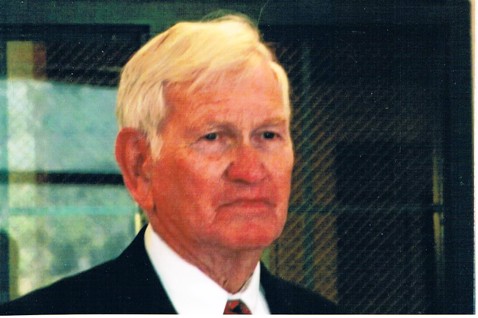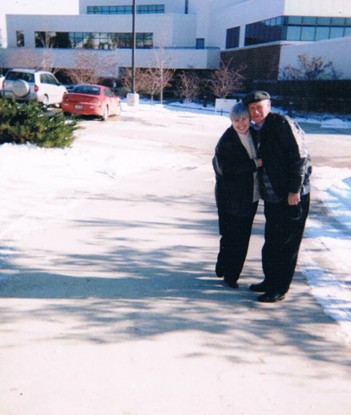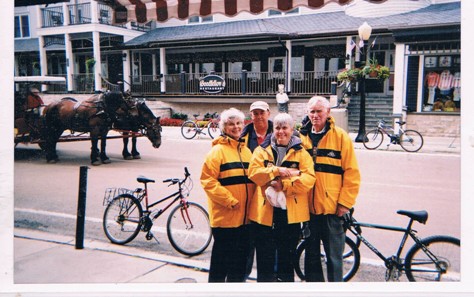 |
"She listened to her heart above all other voices."
~ Kobi Yamada |
Two very special people are celebrating their 69th
wedding anniversary this month. From my
perspective as their child, I could not have asked for a more loving home. But this is their story.
Dad grew up on a hard-scrabble farm, the second-youngest
of fourteen kids. By the age of six, he
was responsible for driving the meager herd of cattle out to the pasture every morning and rounding them up every evening to earn his keep. He really
did walk three miles to school every day - not wearing shoes until the weather
turned cold in the fall – and never missed a day. One of the few possessions he kept from his
childhood is a certificate of perfect attendance from his grade school. He felt that education was his way out.
 |
| Tracy at six years of age |
Mom was a city kid, starting school at Fremont Grade
School in St. Louis. She was artistic,
and once got in trouble for collecting colored paper in the alley behind a
nearby dry cleaners. Following her
grade-school years, she was boarded out with various family members until my
great-grandmother eventually brought her to live permanently in her loving
home.
 |
| Dorothy at six years of age |
 |
| Dorothy, eighth grade graduation from Fremont Grade School |
Tracy and Dorothy met in high school, where he was a
sports star. Dad once had an invitation
to try out with the St. Louis Cardinals, but couldn’t afford the spikes and new
glove that he would need. A high school
coach encouraged him to continue his education.
 |
| High school sweethearts |
 |
| Married in 1948 |
Mom was – and still is – a strikingly beautiful
woman. She has always been outgoing and
supportive of others, and it is no surprise that their stars crossed.
Marrying young, money was often in short supply, but love
never was. Armed with a high school
diploma, Dad first taught in a one-room school, where some of the “kids” were nearly the same age as he. He continued to
teach in Missouri during the academic years, while he and Mom both attended
Western New Mexico University for seven summers to complete their undergraduate
degrees. Dad eventually went on to
complete a Master’s Degree in Education. Four years after their marriage, while they were still "commuting" to summer classes in New Mexico, I came along! They both worked various jobs to support themselves and their young
daughter during those years. I can still
remember getting up at dawn and riding in the car to pick up my Mom at the
hospital when she finished her overnight shift.
Dad, at various times, worked as a police officer and a school
janitor. He often said that all jobs are
honorable if you do your best. Both of
them took full course loads every summer, and worked full time, but they
arranged their schedules so that one of them was always available to be with
me. And they did it all with a smile and
a happy heart. On top of everything
else, they were terrific tennis players.
 |
| One of Dad's many jobs, at a Sinclair gasoline station |
 |
Dad's first teaching job, in 1948, in a one-room school.
"Mr. Brown" is pictured in the upper left. |
 |
| Dad and me, sometime in 1953 |
 |
| Summer of 1954, in New Mexico |
Dad would spend hours playing checkers or cards with me,
but he never “let” me win – winning had to be earned. I never became an expert at any game, but I
learned to be a gracious loser. Dad sees
the world clearly. In his eyes, there is
a definite “right” and “wrong”. One
summer, he was teaching a PE course at Western New Mexico. It just so happened that he needed a PE
credit, so the chairman of the department told him to sign up for his own
course. At the conclusion of the course,
he gave himself a “B.” Because of a sinus condition, he couldn't hold
his breath and swim underwater as long as he expected of his students. He didn’t feel that his performance merited an “A” and he would not give himself any grade he did not earn. That incident fairly sums up my Dad.
 |
| Graduation, 1959. Mom got her Bachelor's, Dad got his Master's degree |
 |
| Tracy Brown, circa 1959 |
Mom never met a stranger.
She exudes an understanding warmth that others instantly recognize. Whether it was as a teacher, who saw to it
that one child got a dime to buy ice cream like the other students (some 20
years later, that girl told me the story) or as a caring and sympathetic
stranger who sat up all night, on a train ride to Albuquerque, while a grieving
woman recounted the recent passing of her mother. Mom is the only person I have ever met who really listens, not only with her ears, but with her eyes and her
heart. You know she is fully
present. She believes you should be kind
whenever you can - - and you always can!
 |
| Mom finds joy in every day - and everyday things |
Both of my parents worked hard and enjoyed their
careers. Dad went from PE teacher to history
teacher to assistant principal to principal of a junior high school. (His school literally had defined “up” and
“down” staircases – another example of his clear-cut distinction of right and
wrong.) Mom taught hundreds of kids to
read and to write in beautiful cursive penmanship. She once even taught a football star to knit.
 |
Mrs. Brown's third grade classroom, Manchester
Elementary School (c. December 1960) |
 |
Dad was appointed Assistant Principal at
Parkway Central Junior High in 1961 |
 |
Mom and Dad visiting the courthouse in Arkansas where they were married.
This photo is from the mid-1960s |
 |
Manchester United Methodist Church
directory photo from the mid-1970s |
 |
In 2012, Tracy Brown was inducted into the Western New Mexico University
School of Education's Hall of Fame, for a lifetime of work in the field of education.
Dad said that next to his family, he is most proud of this recognition. |
Travel was always part of our lives. From car trips to the Sequoia National Park
where a moose once stuck his head in the car window, to visiting a pineapple
plantation in Hawaii, to watching fireworks from a gondola on the canals of
Venice, those adventures will always be magical memories. There were trips to Egypt and to Turkey, and
a staple for my folks for years was an annual train trip to Scotland, where
they stayed in bed-and-breakfasts.
 |
Dad, Mom and me in Hawaii in 1966, the summer before I started
high school. (And an unknown waitress who photo-bombed us.) |
 |
Mom tried her skill at camel-riding at the Pyramid of Cheops
in Egypt in 1988. |
 |
| On board a cruise ship on the Nile River in Egypt, summer of 1988 |
 |
Over the years, Scotland and her off-shore islands
were some of Dad's favorite travel destinations |
Dad is always in a hurry, and everything he does is at a run. One summer, on a train in London, he decided
that they should be on a different train, and he stepped back onto the
platform, just as the doors slid shut behind him and the train pulled out, with
Mom still aboard – along with both of their passports, all of their money, and
their luggage. With his persistent
nature and her ability to remain calm and not get flustered, they eventually
were reunited at their scheduled B & B.
The only repercussion was that Dad, thereafter, carried his own passport
and a little money.
Mom and Dad have always been supportive of me. When I became engaged to a divorced man with
two young sons – and, most objectionable to my Dad, a beard – they had some
reservations about my choice, but they accepted and grew to love the man, the
boys and now their families, including three great-granddaughters. (It did help, too, that the man eventually
shaved his beard.)
 |
Mike, still wearing his beard, at the Lake of the Ozarks
on Mom's birthday in 1989. |
 |
Dad and me in Jefferson City in the spring of 2006. We were there
to fill out the paperwork for my retirement from a career in education |
 |
Thanksgiving 2017 - Mom and Dad with grandson Matt and his family: wife,
Becky, and daughters Allison (next to Mom) and Abby., along with Mike |
 |
Thanksgiving 2017 - Mom and Dad with grandson Tim,
his wife, Mary, and the newest great-granddaughter, Zoey |
 |
Mackinac Island, 2008. We took this trip in the fall, because after
Mike retired at the end of 2007, this was the first year since 1948 that
one or more of us wasn't involved with school in September. |
 |
| On a cruise to celebrate their 60th anniversary in December 2008 |
 |
| Sonora Desert Museum, Tucson, Arizona, February 2017 |
 |
| September 2011 |
As much as Mom and Dad enjoyed their travels, their
beloved Hidden Valley Farm, which they purchased in 1965 and to where they moved full-time after Dad's retirement in 1980, always beckoned them home. For many years, there were farm
animals: registered Black Angus cattle,
Angora goats, pygmy goats that a daughter brought home in dog crates in the
back seat of her car. There were barn
cats and house cats, and a couple of dogs:
Moneypenny, the sheepdog, and a
loving rescue dog named Samantha. To top
it off, for decades Mom and Dad kept our dogs nearly every summer weekend as we
went to the lake. Maggie, litter-mate to
their sheepdog, and two Airedales, Fergie and Tasha, were always welcome at the
farm.
 |
| Cats and cattle populated Hidden Valley Farm |
 |
Two sheep and a herd of Angora goats, after shearing. Mom spun
the wool and hair and used it to knit beautiful sweaters and scarves |
 |
Sitting in the shade with our dogs - Fergie, the Airedale
and Maggie, the Sheepdog |
 |
| Dad loves to sit and gaze out over the farm that he worked for so many years |
 |
| Mom seated in a chair on our front porch |
Today, the farm animals are all gone. Puff-Puff, the barn cat, and Princess, the house cat, are the only remaining four-footed residents, but visiting
wildlife – deer, turkeys, raccoons and birds – are still fed and looked
after. Dad still cuts wood; Mom still
knits. There is still the nightly “best
of three hands” of Rummy.
 |
| 60th anniversary, 2008, at lunch at a favorite restaurant... |
 |
...and on a cruise, where they won the "Newlywed Game" and were celebrities
for the remainder of the cruise (and I learned more than I wanted to know.) |
 |
Though he has slowed down a little bit, Dad still cuts a lot of
his own wood...and splits it all by hand |
 |
With the animals gone, Mom no longer spins as much as she once
did, but still knits a great deal - and still goes barefoot year-around. |
 |
| After 69 years of marriage, they still hold hands... |
There is a fire burning brightly in the fireplace, and a couple sitting in rocking chairs, holding hands. There is love.
...and there is love.
I doubt very much if many people have been as fortunate
as I to have such special people as parents.
I am proud and grateful to have been a part of their Road
Stories.





































































